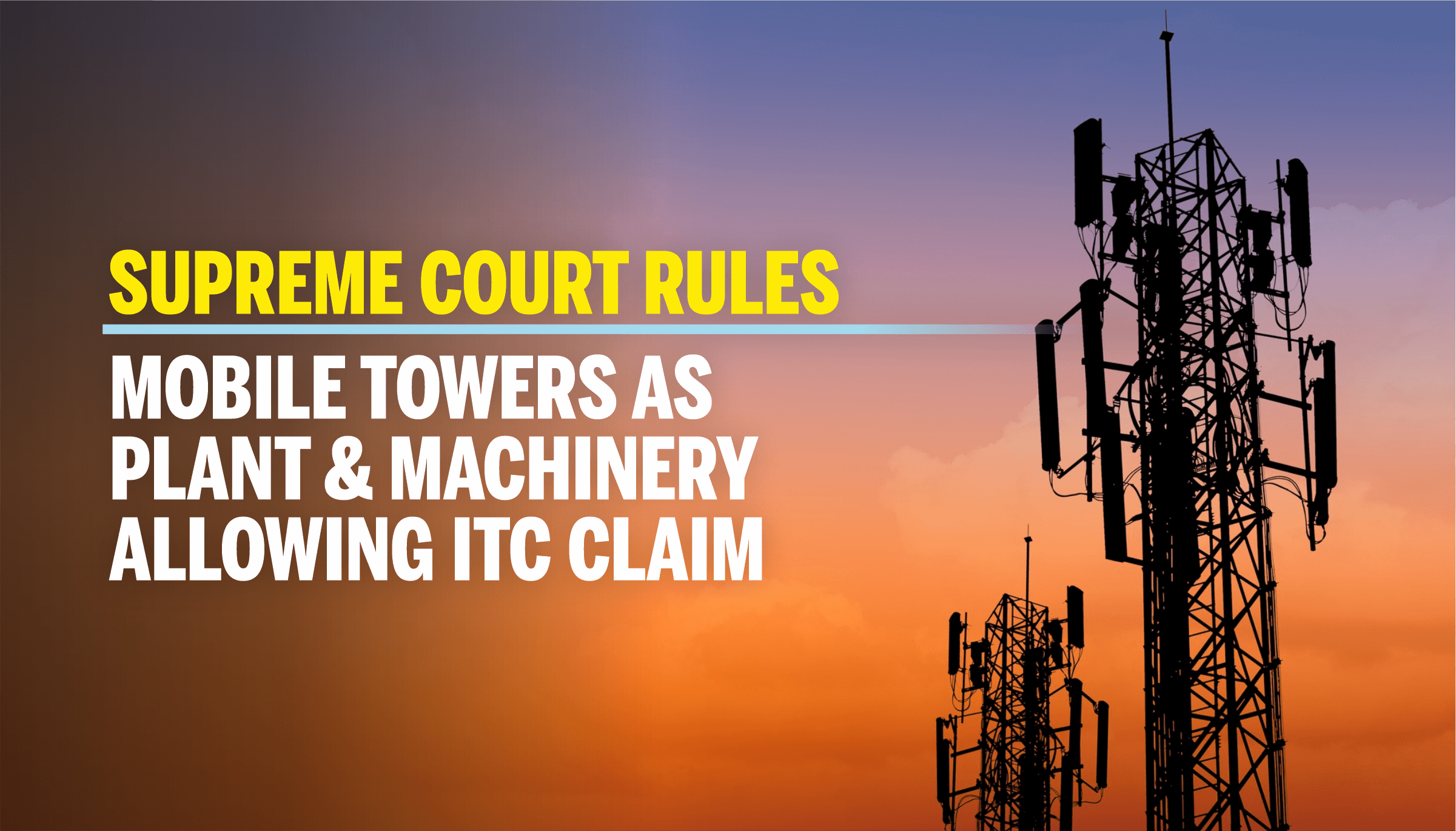SC Rules Mobile Towers as Plant & Machinery, ITC Allowed

In a significant relief to India’s telecom industry, the Supreme Court on 8 August 2025 dismissed the Revenue Department’s Special Leave Petition (SLP) challenging a Delhi High Court ruling that had held mobile telecom towers to be “plant and machinery”, thereby entitling them to input tax credit (ITC) under the Goods and Services Tax (GST) framework.
The SLP, filed in the case of Bharti Airtel, was rejected at the admission stage by a bench comprising Justice Pankaj Mithal and Justice Prasanna B. Varale, effectively upholding the Delhi High Court’s verdict and declining to interfere. Importantly, the Court refused to accept the Revenue’s attempt to draw a distinction between the service tax and GST regimes in the treatment of such infrastructure, terming such arguments as impermissible “hair-splitting”.
Background and Context
The core issue revolved around the interpretation of Section 17(5) of the CGST Act, 2017, which restricts ITC on works contract services or goods/services used for the construction of immovable property (other than plant and machinery). The Explanation to this provision excludes “plant and machinery” from the scope of “immovable property” for ITC purposes.
The Revenue Department has historically taken the view that telecom towers, being affixed to land or rooftops, qualify as immovable property and are thus ineligible for ITC. This position traces back to disputes under the pre-GST service tax regime, where similar questions arose regarding the capitalisation, mobility, and functional classification of such assets.
In the pre-GST era, the Supreme Court had in certain contexts recognised that infrastructure like telecom towers could be treated as plant and machinery. However, the introduction of GST in 2017 reignited the debate, with the Revenue seeking to deny credit on the basis of their immovability, despite the specific statutory carve-out for plant and machinery.
Delhi High Court’s Findings
In its earlier ruling, the Delhi High Court held:
-
Telecom towers are plant and machinery within the meaning of the CGST Act, as they are apparatus used for the business of providing telecom services.
-
The fact that such towers are fastened for operational stability does not alter their nature as movable business assets.
-
Denial of ITC on such critical business infrastructure would be contrary to the seamless credit chain intended by the GST regime.
This interpretation aligned with the broader principle of GST being a value-added tax that avoids cascading by allowing credit on legitimate business inputs.
Supreme Court’s Position
By dismissing the Revenue’s SLP at the threshold, the Supreme Court has:
-
Affirmed the Delhi High Court’s reasoning that telecom towers are plant and machinery and not immovable property for the purposes of Section 17(5).
-
Refused to revisit settled principles from the service tax regime, noting the legislative intent to maintain consistency across tax frameworks.
-
Sent a strong message against restrictive interpretations of ITC provisions that undermine the core GST design.
Implications of the Ruling
For the Telecom Industry: Immediate eligibility to claim and retain ITC on telecom towers, reducing capital cost burdens. Potential for refund claims or adjustment of earlier denied credits, subject to limitations and procedural requirements.
For Other Infrastructure-Heavy Sectors: The reasoning may extend to other industries where large fixed installations (e.g., broadcasting masts, industrial machinery) have been disputed as immovable property. Strengthens the argument that operational fastening for stability does not equal permanent immovability under GST law.
For GST Administration: Signals judicial disapproval of aggressive credit denials based on narrow property classifications. Emphasises the need to interpret ITC provisions in a manner consistent with GST’s objective of avoiding tax cascading.
Conclusion
This decision reinforces the principle that the functional nature and use of an asset in business should guide ITC eligibility, rather than purely its method of installation. It also underlines judicial resistance to departmental attempts to re-litigate settled positions from the pre-GST era without clear statutory change. For businesses, the ruling provides a valuable precedent to safeguard credit claims on capital-intensive installations, ensuring that GST remains a truly consumption-based tax.
